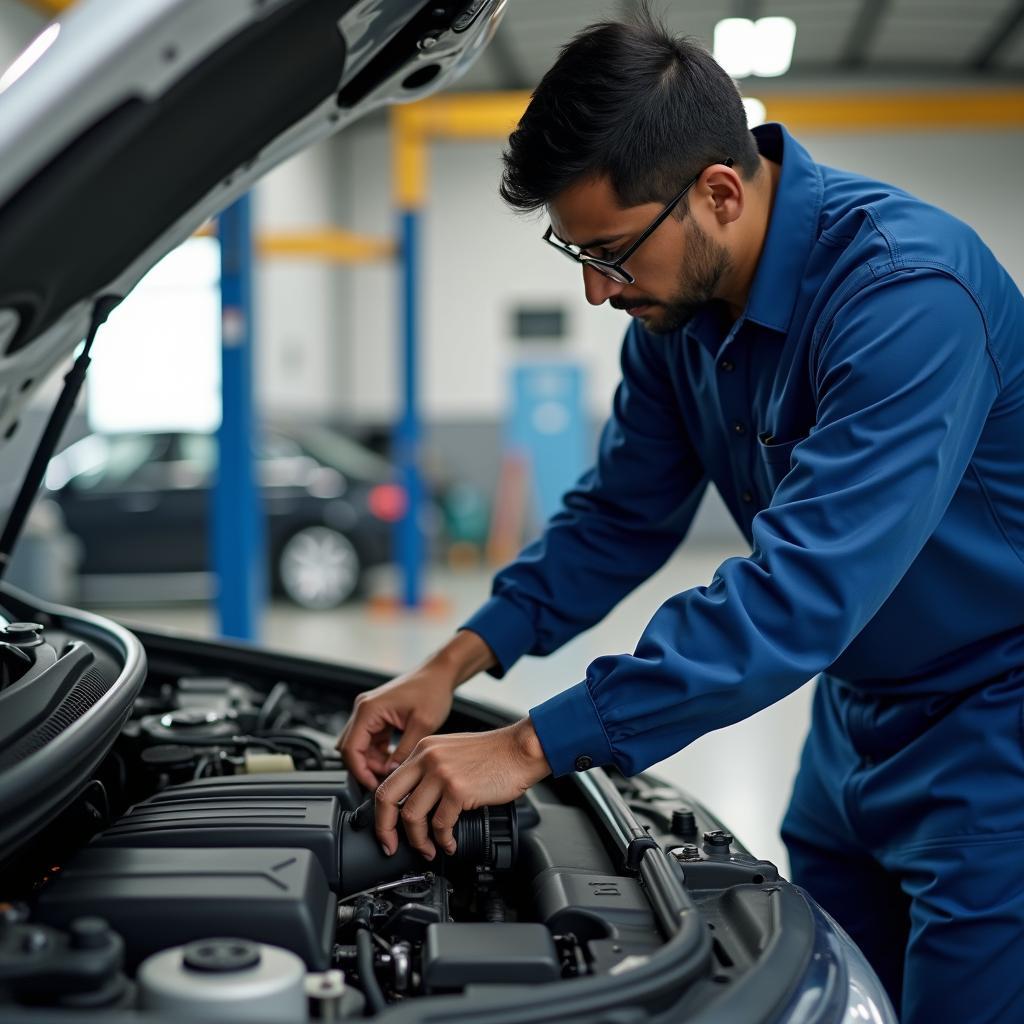Owning a car in India is a significant investment, and understanding the “After Service Expenditure Comparative Statement Of Cars In India” is crucial for making informed decisions. While the initial purchase price is a considerable factor, the costs associated with maintaining and servicing your vehicle throughout its lifespan can significantly impact your overall ownership experience. This comprehensive guide delves into the intricacies of after-sales service expenses, comparing different car models available in the Indian market to help you make a prudent choice.
Factors Affecting After Service Expenditure
Before diving into the specifics of different car models, it’s essential to understand the key factors influencing after-service costs in India:
- Brand Reputation: Established brands with a strong reputation for reliability and quality often have lower service costs.
- Vehicle Segment: Luxury and premium cars generally have higher maintenance requirements and more expensive parts.
- Engine Size and Type: Larger engines and diesel variants tend to have higher service costs compared to smaller petrol engines.
- Driving Conditions: Frequent driving in harsh conditions like extreme heat, dust, or heavy traffic can increase wear and tear, leading to higher service expenses.
- Service Network and Availability of Parts: A widespread service network and readily available spare parts can significantly reduce downtime and associated costs.
Comparing Popular Car Models in India
To provide a clearer picture, let’s compare the after-service expenditure of some popular car models across different segments in India:
Hatchbacks
Hatchbacks are popular for their fuel efficiency and affordability. Here’s a comparative look at their service costs:
- Maruti Suzuki Swift: Known for its low maintenance and wide service network, the Swift boasts some of the lowest service costs in its class.
- Hyundai Grand i10 Nios: Hyundai offers competitive service packages and readily available parts, making the Grand i10 Nios a cost-effective choice.
- Tata Tiago: Tata Motors has made significant strides in improving its after-sales service, and the Tiago offers a good balance between affordability and maintenance costs.
Sedans
Moving up the segment, sedans offer more space and comfort but often come with slightly higher service expenses:
- Honda City: The Honda City is known for its reliability and engine durability, resulting in relatively lower service costs in the long run.
- Hyundai Verna: Hyundai’s focus on after-sales service extends to the Verna, offering competitive service packages and a wide service network.
- Maruti Suzuki Ciaz: Benefitting from Maruti Suzuki’s vast service network and readily available spare parts, the Ciaz offers a cost-effective ownership experience.
SUVs
SUVs are increasingly popular in India, but their larger size and more complex mechanics can translate into higher service costs:
- Hyundai Creta: The Creta enjoys the advantage of Hyundai’s extensive service network and competitive service costs within its segment.
- Kia Seltos: Kia has quickly gained popularity for its feature-packed offerings and competitive service costs, making the Seltos a compelling choice.
- Tata Nexon: Tata Motors has made significant efforts to improve its after-sales service, and the Nexon offers a relatively affordable ownership experience in the SUV segment.
Tips to Minimize After Service Expenditure
Regardless of the car you choose, implementing these tips can help you keep your after-service expenses in check:
- Adhere to the Scheduled Maintenance: Following the manufacturer’s recommended service schedule ensures optimal vehicle performance and can help prevent costly repairs down the line.
- Choose Genuine Parts: While opting for cheaper, non-genuine parts might seem tempting, using genuine parts ensures compatibility and often comes with a warranty.
- Drive Responsibly: Aggressive driving habits can accelerate wear and tear, leading to increased maintenance needs. Adopt a smooth and responsible driving style to prolong the life of your car’s components.
- Regularly Inspect Your Vehicle: Make it a habit to visually inspect your car for any leaks, unusual noises, or warning lights. Addressing minor issues promptly can prevent them from escalating into major problems.
- Compare Service Costs: Before heading to the service center, obtain quotes from different authorized workshops and compare prices for parts and labor.
Conclusion
Understanding the “after service expenditure comparative statement of cars in India” is vital for making informed decisions that align with your budget and ownership expectations. While initial purchase price plays a crucial role, factoring in long-term maintenance costs ensures a smoother and more enjoyable ownership journey. By considering brand reputation, vehicle segment, engine specifications, and adopting proactive maintenance practices, you can effectively manage your car’s after-service expenses and maximize your investment.
FAQs
1. Which car brand offers the lowest service costs in India?
Maruti Suzuki generally holds the reputation for having the lowest service costs in India, primarily due to its widespread service network, readily available spare parts, and competitive labor charges.
2. Are diesel cars more expensive to maintain than petrol cars in India?
Yes, diesel cars tend to have slightly higher maintenance costs compared to their petrol counterparts due to the more complex engine design and the higher cost of diesel fuel.
3. How often should I service my car according to the manufacturer’s schedule?
Most manufacturers recommend servicing your car every 10,000 kilometers or once a year, whichever comes first. However, it’s crucial to refer to your car’s owner’s manual for specific recommendations.
4. What is covered under a car’s warranty?
A car’s warranty typically covers manufacturing defects and premature failures of major components within a specified period or mileage.
5. Can I service my car at a local garage to save costs?
While opting for a local garage might seem cost-effective, it’s generally advisable to get your car serviced at authorized workshops, especially during the warranty period, to ensure the use of genuine parts and qualified technicians.
Need assistance choosing the right car for your needs or have questions about car maintenance? Don’t hesitate to reach out to our team of experts. Contact us via WhatsApp at +1(641)206-8880 or email us at [email protected]. We’re available 24/7 to assist you.


